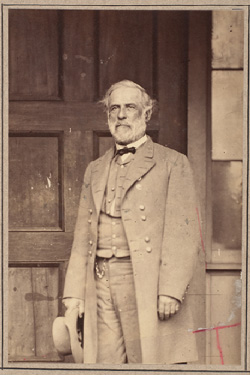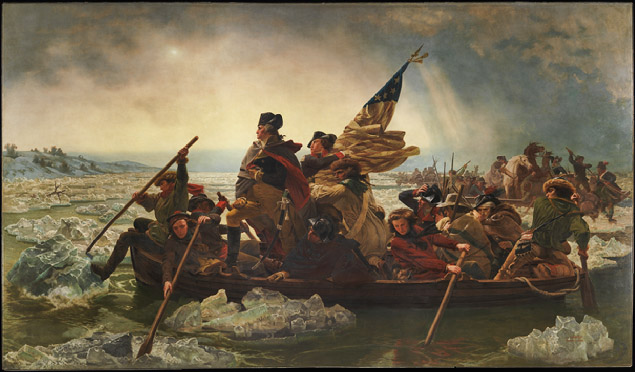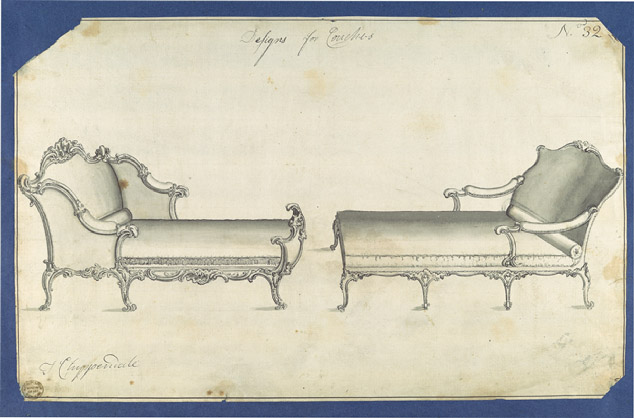400,000 images released
Within the last week, the Metropolitan Museum of Art in New York City announced that it was making 400,000 high-resolution digital images of works in its collections available on its website — free for non-commercial use.
 No permissions required.
No permissions required.
No fees charged.
And it will keep adding to the number of available images as it creates new digital files.1
The Museum has labeled this new open-availability program as Open Access for Scholarly Content (OASC) and it looks on it as “a resource for students, educators, researchers, curators, academic publishers, non-commercial documentary filmmakers, and others involved in scholarly or cultural work.”2
And what does it mean by scholarly content?
It defines that to include the “dissemination of ideas and knowledge derived from study or research for educational/cultural purposes.”3
And it goes on to give examples:
All school and academic work (including theses, dissertations, etc.), conference proceedings, journal articles, essays in Festschrifts, museum exhibition catalogues, non-commercially produced textbooks and educational materials, books published by university presses or the academic/scholarly imprint of commercial publishers, self-published books, and documentary films … in any media format (print, electronic, film, etc.).4
The Museum’s terms and conditions then provide that the images “may be downloaded for limited non-commercial, educational, and personal use only, or for fair use as defined in the United States copyright laws,” and credit must be given to “the author and source of such images,” including the museum’s URL “www.metmuseum.org.”5
Sounds an awful lot like what we do as genealogists, doesn’t it? Disseminating ideas and knowledge for educational and cultural purposes? Educational use? At a minimum, fair use?
As long as we’re not producing “commercially published general-interest books in print or electronic media; all products, merchandise, (including posters, calendars, notecards, datebooks, mugs, etc.), advertisements, or promotional materials for any services or products,”6 these images are ours to use.
So… only images marked with the OASC indicator qualify… and there’s one more question. See, this isn’t the usual archive we might be interested in. This is an art museum. Is there going to anything there we might be interested in?
The Legal Genealogist thinks so… like the image you see above, of General Robert E. Lee.
And you think maybe a genealogist might be able to use this one? Say, a genealogist like me, whose ancestor made this crossing?

Emanual Leutze, “Washington Crossing the Delaware” (1851)7
Or this one, for a family that owned one of these?

Thomas Chippendale, Two Couches, c 1753-548
Yeah.
I thought so too.
Images free to use, for scholarly content.
Thank you, Metropolitan Museum of Art.
SOURCES
Image of Robert E. Lee: Mathew B. Brady, General Robert E. Lee, 1865; Gilman Collection, Metropolitan Museum of Art, New York (www.netmuseum.org).
- “Metropolitan Museum Initiative Provides Free Access to 400,000 Digital Images,” Press Room, Metropolitan Museum of Art (http://metmuseum.org/ : accessed 19 May 2014). ↩
- Ibid. ↩
- Ibid. ↩
- Ibid., “Frequently Asked Questions: Open Access for Scholarly Content (OASC),” Frequently Asked Questions. ↩
- Ibid., “Terms and Conditions/Terms of Use,” Information. ↩
- “Frequently Asked Questions: Open Access for Scholarly Content (OASC),” Frequently Asked Questions, Metropolitan Museum of Art (http://metmuseum.org/about-the-museum/press-room : accessed 19 May 2014). ↩
- Emanual Leutze, “Washington Crossing the Delaware” (1851); Gift of John Stewart Kennedy, 1897, Metropolitan Museum of Art, New York (www.netmuseum.org). ↩
- Thomas Chippendale, Two Couches, c 1753-54, in Chippendale Drawings, Vol. I; from Rogers Fund, 1920, Metropolitan Museum of Art, New York (www.netmuseum.org). ↩



Sounds good, but weren’t these in the public domain anyway? Are they claiming copyright in the digital version of them? What would make such a version original enough to merit copyright? Or are they claiming copyright in the overall compilation, in which case copying one would not infringe the compilation anyway?
What do you think?
Many of the images in the collections are modern photographs of singular items in the museum, such as chairs and tables built in the 17th and 18th centuries. As to those images, the museum certainly has a copyright and is electing to grant permission for use anyway in this blanket way. As to the other older items, it really isn’t so much a matter of copyright as a matter of terms and conditions. Anyone who owns an item can say what anyone else can and can’t do with its copy of that item, whether it’s copyrighted or not. And the museum is being very generous in allowing use of these items too.
Hi,
When I was a teen, in the sixties, my parent took us on a trip to visit historic sites in Pennsylvania. Washington Crossing Park, in New Hope, PA, was one of the places we visited.
If one compares the painting, ‘Washington Crossing the Delaware’, to the actual site, there is no accuracy. The Trenton River at the ‘Crossing’ site is VERY narrow, about one fourth of the width shown in the painting. Washington would not have had time to stand up, before the boat reached the opposite shore.
That brings us to another issue. For all those men to cross in a timely fashion, many boats would have been needed. Just were did all of those boats come from? Especially since there were Loyalist spies EVERYWHERE near Philadelphia….and the mission needed to be kept an absolute secret. They certainly could not go about the countryside commandeering boats because word would leak out.
We know that plans for the attack remained a close guarded secret, as the Hessian soldiers were totally surprised by the attack at Trenton.
Well, no boats were needed.
There was a ‘Mini Ice Age’ at the time. Washington and his men must of walked across the ice.
I remember seeing the bridge where ‘the shot heard around the world’ was fired. In disbelief, I said to my parents, “This is it? This is it?” I could not believe that a momentous event could have happened THERE: on a puny, little bridge across a ‘creek.’
Many years latter a Brit told me that Stamford Bridge, where the battle between King Harold Godwinson of the English and King Harald Hardrada took place, was also lacking in the expected drama given the significance of the event.
The point is this…… History is made as we go about out lives in ordinary surroundings.
Monumental paintings, such as ‘Washington Crossing the Delaware,’don’t often portray the reality of people playing their role in ordinary surroundings.
BTW: I also have an ancestor who crossed the Delaware with Washington.
I’m afraid what you were told during your teenage trip is a little inconsistent with the reality of the event. Quoting from David Hackett Fischer’s Washington’s Crossing: “A large flotilla of small river craft was waiting when the men arrived. The Jersey militia of Hunterdon County had done their work well. Parties … had collected many boats from the upper Delaware and Lehigh Rivers. Bray’s men alone had rounded up twenty-five vessels of various shapes and sizes.” (at 215-216) The whole chapter “The River” tells a much different story from what you were told — the river at McConkey’s Ferry was 800 feet wide, the water high and swift, the ice broken into pieces and making the passage treacherous.
Thanks for the heads-up on this Judy!
I want to let you know that your blog post is listed in today’s Fab Finds post at http://janasgenealogyandfamilyhistory.blogspot.com/2014/05/follow-friday-fab-finds-for-may-23-2014.html
Have a great weekend!
Thanks, Jana! Always an honor to make your list!